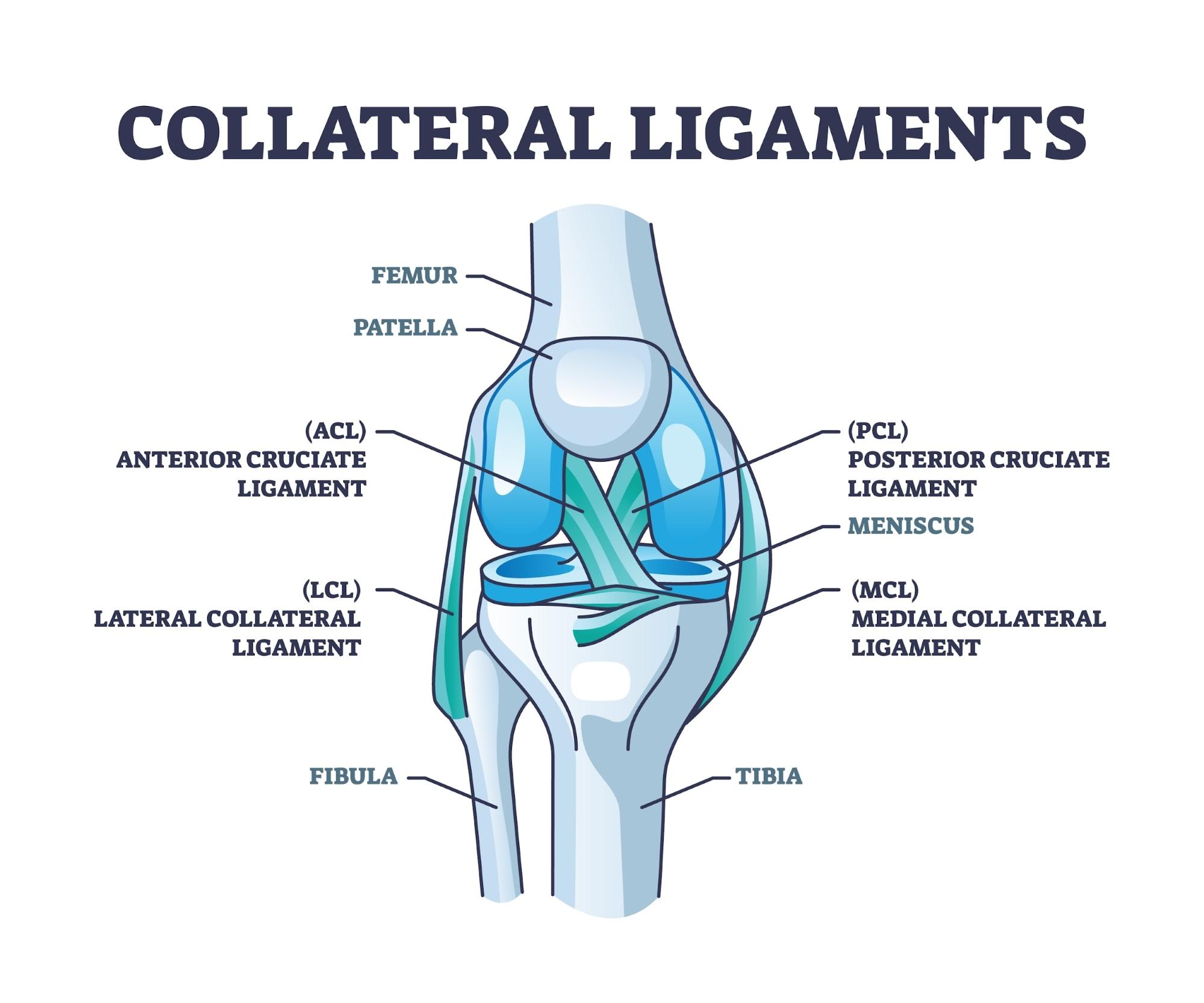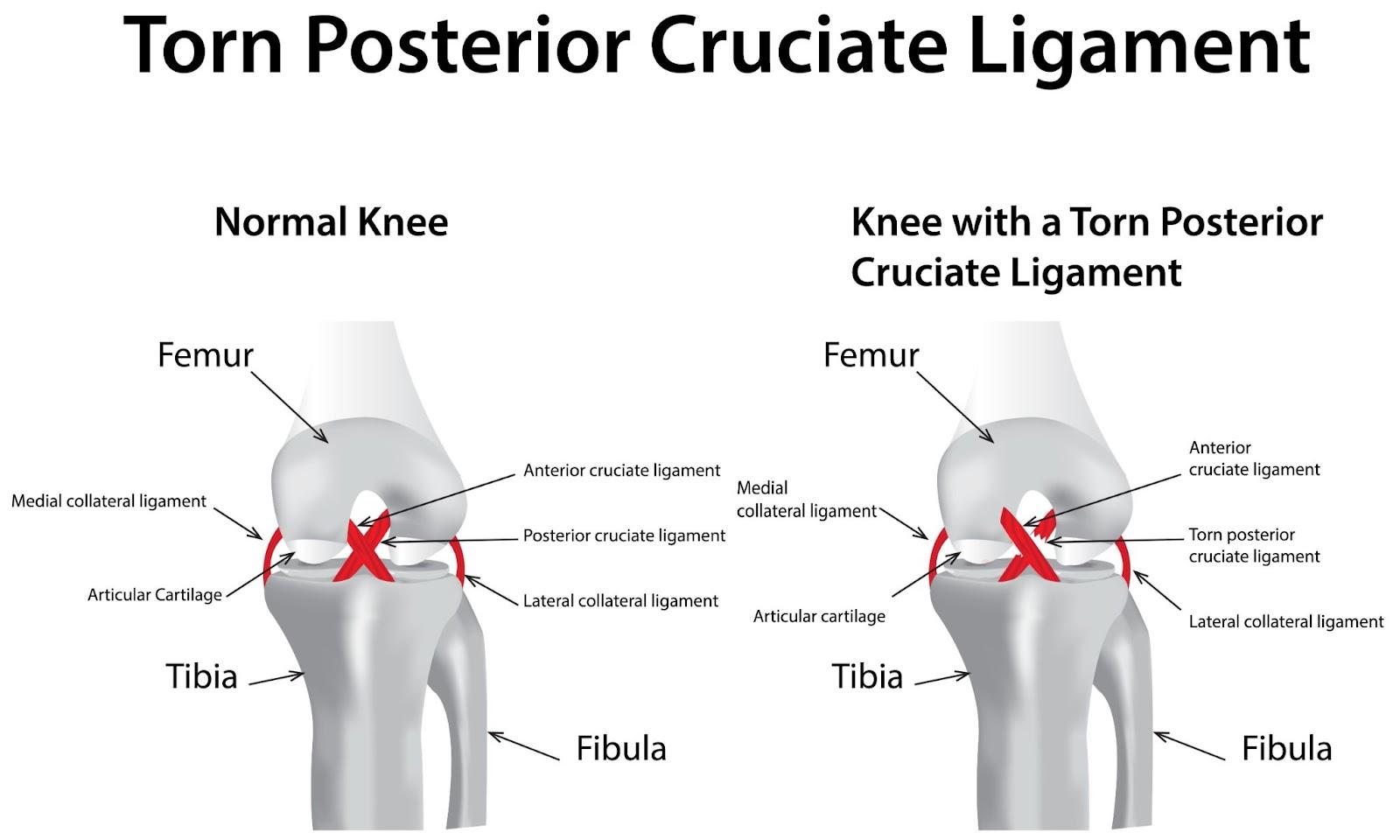PCL Reconstruction
What is PCL Reconstruction?
Posterior Cruciate Ligament (PCL) reconstruction is a surgical procedure designed to restore stability and function to the knee after a significant PCL injury. The PCL, one of the four main ligaments in the knee joint, plays a critical role in stabilising the knee by preventing the tibia (shinbone) from sliding backward in relation to the femur (thighbone). Injuries to the PCL are less common than those to the Anterior Cruciate Ligament (ACL) but can lead to notable knee instability, especially if left untreated.
PCL reconstruction is recommended when the ligament is completely torn or when conservative treatments such as physical therapy do not adequately address symptoms. It is particularly advised for individuals experiencing persistent knee instability, athletes aiming to return to high-demand sports, or those with combined knee ligament injuries.

When is PCL Reconstruction Necessary?
PCL reconstruction is often recommended for specific conditions where the knee’s stability and function are significantly compromised. These include:
- Complete PCL tear — when the PCL is completely torn, knee stability is substantially reduced, often resulting in difficulty with basic activities like walking and turning. Surgery is recommended to restore stability and prevent further damage.
- Chronic PCL injury — over time, untreated or partially healed PCL injuries can become chronic, leading to recurring pain, instability, and difficulty with movement. Reconstruction helps address these ongoing symptoms and improve quality of life.
- Multi-ligament knee injuries — if the PCL injury occurs alongside other ligament injuries (such as to the ACL or MCL), surgery is typically necessary to stabilise the knee and prevent further complications.
- Persistent instability despite conservative treatment — for some patients, non-surgical options like physical therapy do not fully restore stability or alleviate symptoms, making PCL reconstruction a more viable solution to regain function.
- High-activity or athletic requirements — individuals with active lifestyles or those involved in sports may require surgery to safely return to their activities without the risk of re-injury or worsening the condition.
How does PCL Reconstruction work?
PCL reconstruction involves replacing the damaged ligament with a graft to restore knee stability. This graft can come from the patient’s own tissue, typically from the hamstring or patellar tendon (autograft), or from a donor (allograft), with the choice depending on factors like the patient’s age, activity level, and overall health. The procedure begins with small incisions around the knee to insert an arthroscope, a tiny camera that gives the surgeon a clear view inside the joint.
Through additional small incisions, the surgeon removes the damaged PCL remnants, then prepares the knee for the new graft by creating small tunnels in the tibia and femur to anchor the graft securely. Once positioned, the graft is anchored in place with screws or other fixation devices to ensure stability as it heals. Over time, this graft integrates with the surrounding tissue and assumes the function of the original ligament. The surgical process, though intricate, allows patients to regain knee stability and return to their activities when followed by a structured rehabilitation program.
What are the benefits of PCL Reconstruction?
PCL reconstruction offers several advantages for individuals experiencing knee instability due to a PCL injury. By replacing the damaged ligament (link to service page ‘Ligament Tears’), this procedure can help patients regain knee function and stability, especially for those looking to resume an active lifestyle. Key benefits include:
- Restored knee stability — PCL reconstruction reduces knee wobbling and gives the knee joint the support it needs for daily movements and sports activities.
- Improved range of motion — patients often experience a greater range of knee motion post-surgery, which allows for more freedom in movement.
- Reduced pain and discomfort — stabilising the knee often alleviates pain associated with PCL injuries, which helps enhance overall comfort.
- Enhanced athletic performance — for athletes, PCL reconstruction can allow a safe return to sports with less risk of re-injury, especially in activities requiring quick direction changes or sudden stops.
- Prevention of future knee damage — a stable knee helps prevent additional strain and wear on surrounding cartilage and ligaments, potentially reducing the risk of future injuries.
- Long-term joint health — by restoring the knee’s alignment and reducing abnormal stresses, PCL reconstruction contributes to better long-term joint health and function.
Through these benefits, PCL reconstruction plays a crucial role in helping patients regain confidence in their knee’s stability and return to an active, pain-free lifestyle.

In case of a complete PCL tear, reconstruction becomes necessary to restore knee stability and prevent long-term mobility issues.
What results can I expect from PCL Reconstruction?
When you walk through the doors at Cove Orthopaedics (link to homepage) for your PCL reconstruction, our team is dedicated to making you feel at ease and fully informed about each step of the journey. From the initial consultation, we will discuss your specific needs, carefully explain the procedure, and address any questions or concerns you may have.
On the day of surgery, our experienced surgeons perform the procedure using minimally invasive techniques (MIS) to minimise recovery time and discomfort. After the procedure, you will be guided through a comprehensive rehabilitation plan tailored to your goals, helping you regain strength, stability, and confidence in your knee. With regular follow-ups and our team by your side, you can expect steady progress, reduced pain, and a return to the activities you love with a newfound sense of stability and comfort.
How many sessions are needed for PCL Reconstruction?
PCL reconstruction is typically a single-session surgical procedure, but the journey to full recovery involves multiple stages of follow-up and rehabilitation. After the initial surgery, you will attend several post-operative appointments with your surgeon to monitor healing, remove any stitches, and address any early recovery concerns. Following this, a structured rehabilitation program is essential, usually spanning several months and involving regular physical therapy sessions to restore range of motion, strength, and stability in the knee.
While the surgery itself is completed in one session, the follow-up and rehabilitation phases are vital, with therapy sessions typically scheduled one to two times a week based on your progress. Full recovery time varies by individual but generally takes several months to a year for optimal results and a return to full activity levels.
If you’re experiencing knee instability or discomfort, schedule a consultation (link to ‘Contact Us’ page) at Cove Orthopaedics to explore how PCL reconstruction can help restore your mobility and peace of mind.
Frequently Asked Questions (FAQs)
What is the typical recovery time after PCL reconstruction?
Recovery usually spans 6 to 12 months, depending on individual factors and adherence to rehabilitation protocols.
Will I need to wear a brace after PCL reconstruction?
Yes, a knee brace is often recommended post-surgery to protect the graft and support the knee during the initial healing phase.
When can I return to sports or high-impact activities after PCL reconstruction?
Return to sports is typically considered around 9 to 12 months post-surgery, contingent on successful rehabilitation and medical clearance.
What are the potential risks or complications associated with PCL reconstruction?
Possible risks include infection, graft failure, knee stiffness, and blood clots, though these are relatively uncommon.
How does PCL reconstruction differ from ACL reconstruction?
While ACL reconstruction also addresses knee ligament injuries, PCL reconstruction involves different surgical techniques and rehabilitation protocols due to the ligament’s unique anatomy and function.
Is physical therapy necessary after PCL reconstruction?
Absolutely, physical therapy is crucial for restoring knee function, strength, and mobility following surgery.
Will I regain full range of motion after PCL reconstruction?
With diligent rehabilitation, many patients achieve near-normal range of motion, though individual outcomes can vary.
Can PCL injuries heal without surgery?
Mild PCL injuries may heal with conservative treatments like physical therapy, but severe tears often require surgical intervention for optimal recovery.
What factors influence the success of PCL reconstruction?
Success depends on factors such as the severity of the injury, surgical technique, patient adherence to rehabilitation, and overall health.
How do I know if I need PCL reconstruction?
Consulting with an orthopaedic specialist is essential to evaluate your condition and determine if surgery is the appropriate course of action.











